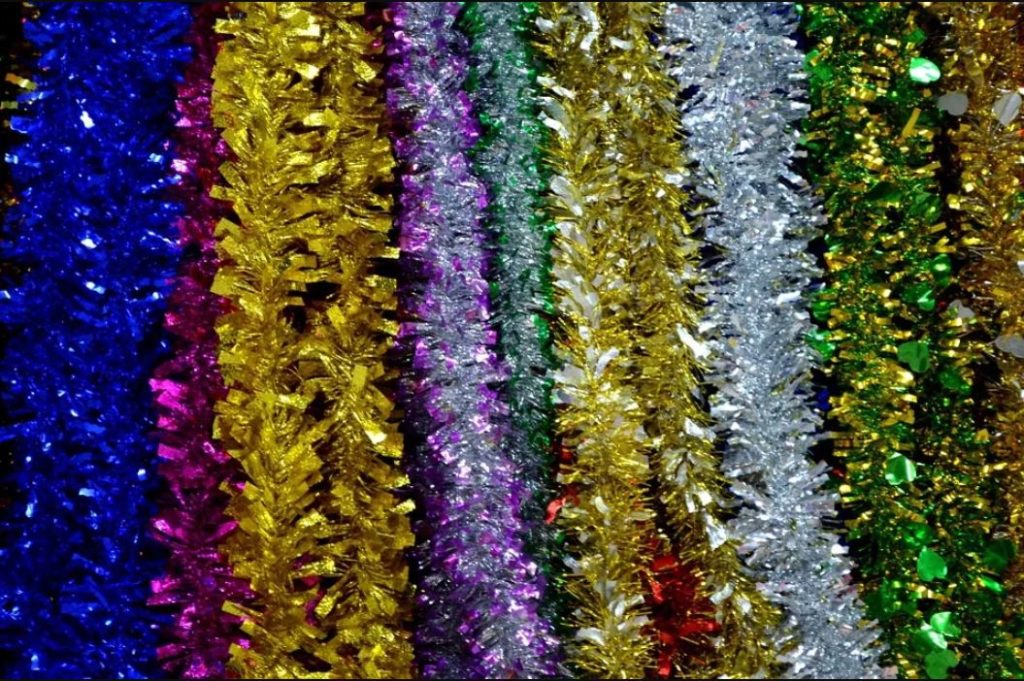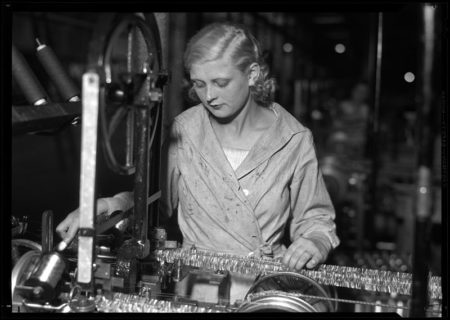How tinsel is made
by Ailsa Harvey · 01/12/2019
Find out how factories produce these glittery garlands

Golden baubles, glittering silver stars, the red and white stripes of decorative candy canes – it’s that time of the year again! For many families around the world, December is the time to take down the
Christmas decoration box and start to adorn a festive tree, and one of the most iconic decorations is tinsel. The bits of metallic multicoloured plastic are fashioned into garlands, wrapped around staircase bannisters and hung from ceilings.
Traditionally, tinsel was crafted by hand from strips of metal, but today this process has been replaced with an almost entirely mechanised method of production. The material has also changed to keep up with the increased demand for Christmas decorations. Instead of strips of metal, most tinsel today is made from a synthetic polymer called polyvinyl chloride (PVC), but there are also biodegradable options on the market that are more eco-friendly.
When it comes to producing this festive favourite, the first step is to pass sheets of metalised PVC through a cutter to be shredded into strips. These are then pulled through rollers, where a wire is attached to the sliced pieces to hold it all together. The tinsel moves into a tub to be spun together to create the layers of feathered material. It’s then cut into lengths on a calibrated cutting wheel and shipped out to stores ready for us to pick up.
The history of tinsel

(Image credit: George Eastman House)
Today’s tinsel is a modernised version of a traditional decoration invented in 1610 in Germany to reflect the candles that decorated the Christmas tree. It was originally made by slicing silver into thin strands, but using this precious metal meant that only the richest people in society could afford to mesmerise their guests with glittering garlands. Silver was beautiful and upmarket, but it would become tarnished by the heat from the flames after a few weeks of use.
People started to make tinsel from cheaper materials, such as copper, partly to make it more affordable and partly to prevent the problem with tarnishing. But when World War I started copper began to increase in value. Manufacturers trialled other materials, but after a series of fires caused by aluminium and poisoning from lead, manufacturers stopped using metal. By the 1980s polyvinyl chloride had become the material of choice as it was less flammable and non-toxic.
This article was originally published in How It Works issue 119, written by Charlie Evans
For more science and technology articles, pick up the latest copy of How It Works from all good retailers or from our website now. If you have a tablet or smartphone, you can also download the digital version onto your iOS or Android device. To make sure you never miss an issue of How It Works magazine, subscribe today!




